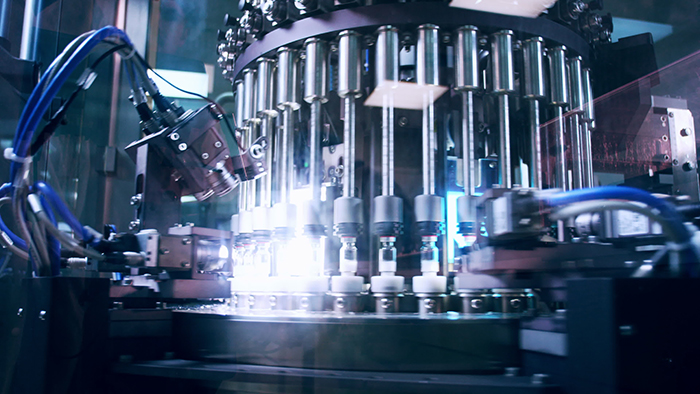Sprinting Toward the Lab of the Future: Practical Steps to Get Started
 What happens when QC leaders need to review data from multiple siloed sources for batch release?
What happens when QC leaders need to review data from multiple siloed sources for batch release?
This common challenge increases the time and effort to review and analyze batch information. The manufacturing quality control (QC) lab follows specific operating procedures, executes sample testing and ensures quality when releasing new products and getting them to patients in need.
With strategies to bring together disconnected systems and optimize key processes – like review by exception – the industry is making progress toward fundamental transformation with advanced laboratory information management systems (LIMS). The first step to meaningful change is recognizing the opportunity and understanding the benefits a modern and connected manufacturing lab can deliver.
Determining the Right Time for Transformation
Biopharmas leveraging legacy technology should consider the costs of maintaining their current QC processes and systems versus modernizing for digital-first quality execution. Encountering ongoing customization cycles and costly upgrades are phases that can be a red flag and a signal that the manufacturing lab requires change.
Yet, advancing QC is not as easy as swapping one system for another. Technical debt is a tough hurdle since so much customization and investment is placed into existing lab infrastructure systems. But is continuing to rely on complex legacy systems and paper processes a scalable strategy that can keep up with the business? Alternatives exist that can digitize QC and significantly improve its workflows.
To truly transform the manufacturing lab, prioritize establishing a foundation for simple and digital QC business processes. Modern, adaptable solutions can streamline compliance, improve collaboration and keep up with evolving business and regulatory requirements while offering fast implementation and lowering the total cost of ownership.
Five Steps for a Successful Lab Transformation
For companies that determine it is time to positively change the manufacturing lab, start by reviewing business processes, mapping out the lab data flow and prioritizing right the first time. Here are five key areas that can move a transformation forward.
- Evaluate business process consistency across all labs. Since each site typically houses at least one analytical chemistry and microbiology lab, standardizing processes across them is essential. Consistent processes ensure that all labs operate efficiently while complying with regulatory requirements and reducing variability and errors. Driving consistency is critical, but it is also essential to recognize regional and governmental differences that impact operations.
- Enable digital workflows. Manual and paper transactions slow operations and limit staff responsiveness to unplanned events. Design digital workflows in your LIMS to automate routine tasks and reduce the likelihood of human error. This can enhance speed, efficiency and accuracy while enabling real-time data capture.
- Map out data flow end-to-end. This is crucial, particularly during the manufacturing process. Defining the roles and interactions between the enterprise resource planning (ERP) system, manufacturing execution system (MES), LIMS and instrumentation systems produces clear ownership. The effort can also streamline the implementation process and create a seamless data flow across each application. The clarity and defined roles can deliver optimal functionality within the manufacturing lab infrastructure.
- Focus on right-first-time execution to reduce unplanned work. Delivering a consistent user experience for staff is vital to achieving this goal. Companies can minimize user frustration and errors by reducing system logins and enabling data flow across systems. Incorporating step-by-step instructional text and technology-assisted guidance helps users navigate complex processes, ensuring timely execution and improving accuracy.
- Consider unifying quality assurance (QA) and QC for increased efficiency and compliance. Bringing together QA and QC enables complete workflows for lab business processes. The outcome is a more accurate and reliable test execution. Unifying these two critical business areas can also increase visibility into the latest procedures and the status and content of quality events, empowering teams to make informed QC disposition decisions on batches with much greater efficiency.
Modern Applications Redefine what is Possible
The manufacturing lab has more options than ever to improve operations with advanced technologies. A modern cloud LIMS can offer capabilities beyond traditional lab systems that can streamline processes. Companies also gain regular software updates that ensure systems are always up to date. These planned updates introduce new features, enhance security and improve system performance, keeping the lab at the forefront of technology with little to no downtime.
Cloud LIMS can also readily scale with business needs, accommodating growth and change without extensive customization. The flexibility allows companies to grow operations without major system overhauls, saving time and resources. Manufacturing labs can adapt quickly to new requirements, whether handling increased data volumes, integrating new instruments or meeting changing regulatory demands.
A cloud LIMS also makes bringing business and lab systems together easier. Connecting LIMS with existing ERP and MES provides a comprehensive view of operations. The connectivity across critical systems enables labs to unify data sources, gain a holistic view of processes and conduct enhanced data analysis and reporting.
A SaaS approach reduces the operational risk and need for significant, periodic investments to maintain legacy systems. The organization can benefit from more predictable costs, such as paying one subscription fee for software, maintenance, updates and support. Cost consistency can make it easier for companies to budget expenses while ensuring access to the latest technology.
Prioritize Automation now and for the Future
Looking at the next evolution of the manufacturing lab, there is increasing focus on reducing manual processes and making staff more efficient. The industry is already making inroads in automation with processes like complaint handling, where a quality management system (QMS) can help identify duplicate complaints, so the potential to save time and costs in the QC lab is promising.
With the advances of modern systems automating routine tasks, almost every step in the lab will eventually require less human intervention. In turn, personnel can focus on activities that deliver value. While fully automated labs are a possibility for the future, prioritize incremental automation in the near term to reduce manual input and increase data accuracy. This can improve the precision of tests and increase the efficiency of lab operations, driving better outcomes and reducing operational costs.
Gradually introducing automated processes helps labs to steadily improve efficiency without overwhelming staff with multiple simultaneous changes. An incremental approach will identify and address issues, ensuring smooth and successful implementation.
Here are areas of opportunity to drive automation:
- Automated sample handling and data entry reduce lab technicians' time on keyboards and prevent transcription errors.
- Exception identification and displays build a foundation for default decisions and reduce time spent reviewing system audit logs.
As automation technologies advance, labs that embrace these innovations will increase effective lab capacity and ultimately be better positioned to meet future demands.
The Business Case for Change is Substantial
Advancing manufacturing lab operations is necessary to stay competitive in the evolving biopharmaceutical and manufacturing landscape. Shifting from legacy systems and paper processes to modern applications, focusing on automation and enabling end-to-end workflows across the quality value chain can help biopharma chart a path to success.
A strong business case exists for LIMS transformation to improve effectiveness and compliance. By identifying specific examples of burdensome manual processes, system limitations and support issues, leaders can clearly illustrate the need for change. Aligning the transformation with broader strategic goals, such as improving compliance, enhancing business integration and supporting innovation, will further strengthen the business case.
Technical debt, outdated infrastructure and vendor support limitations are holding labs back. Manufacturing labs have modern alternatives available to drive transformation, and there is no better time than now to move toward a more efficient lab that delivers a competitive advantage.



